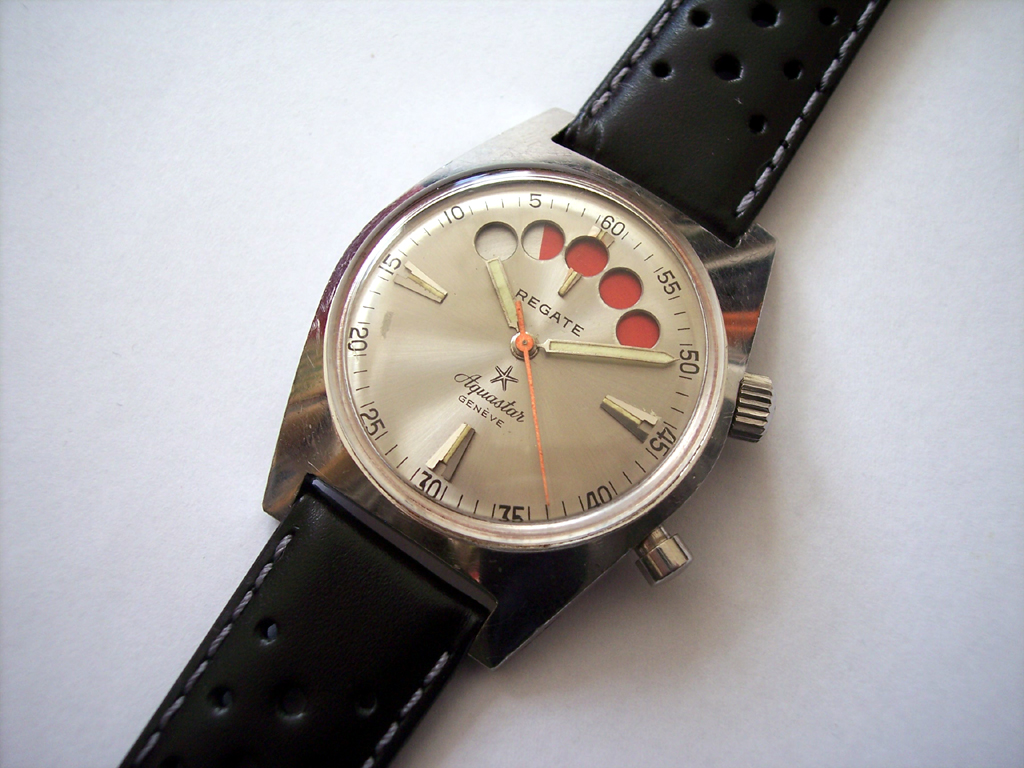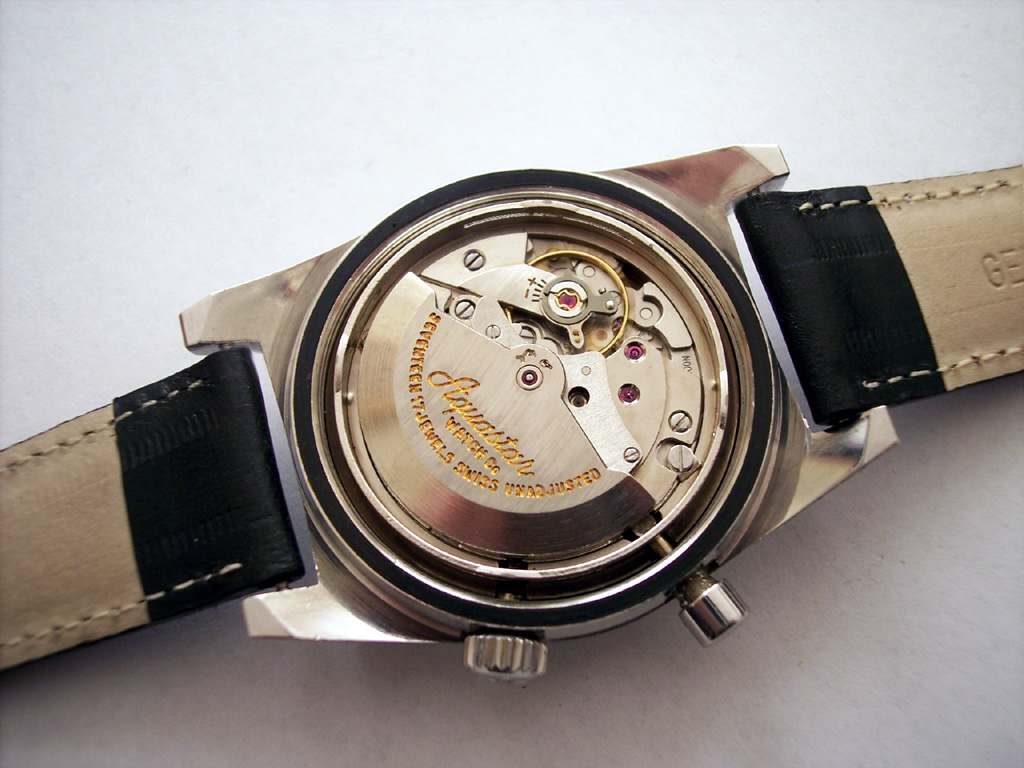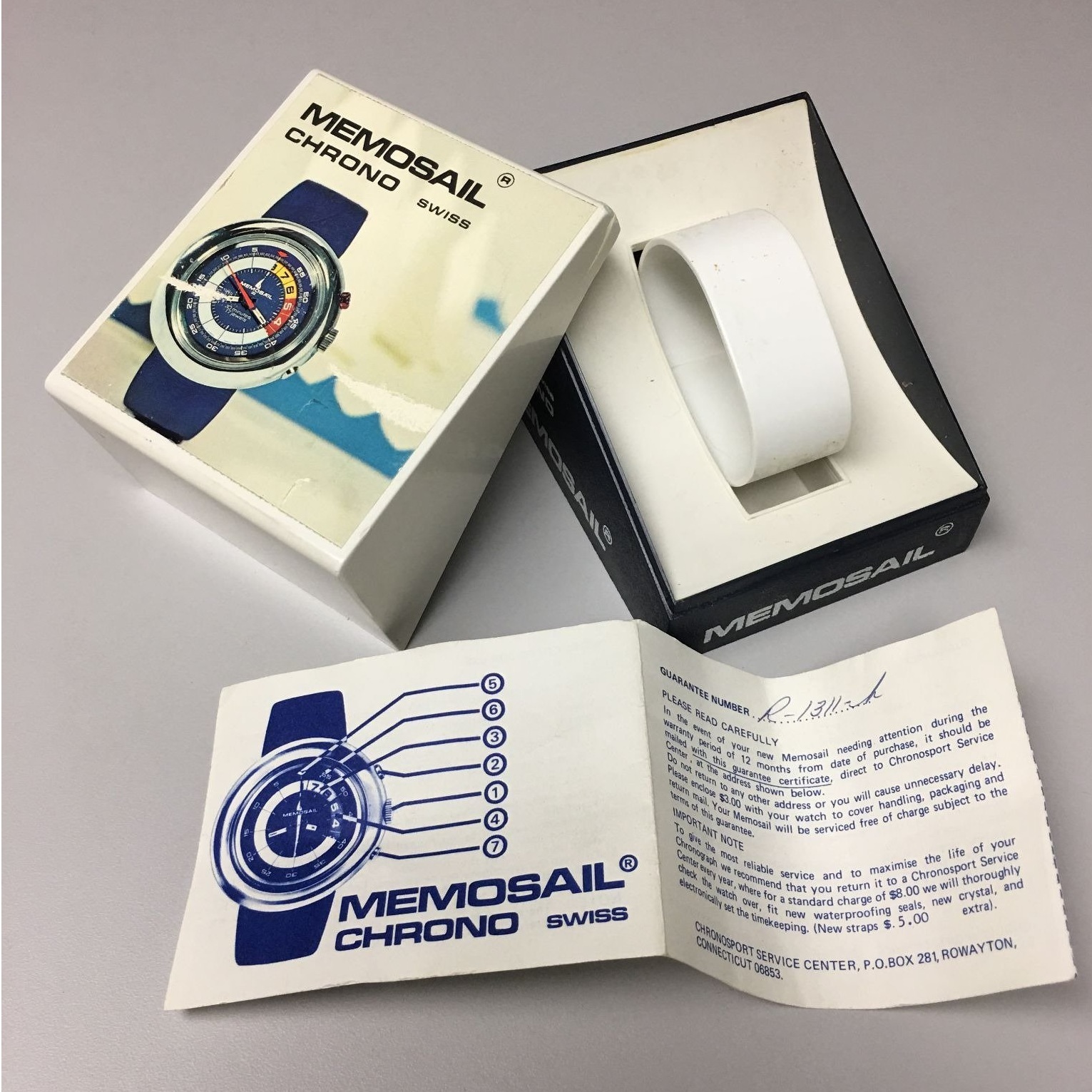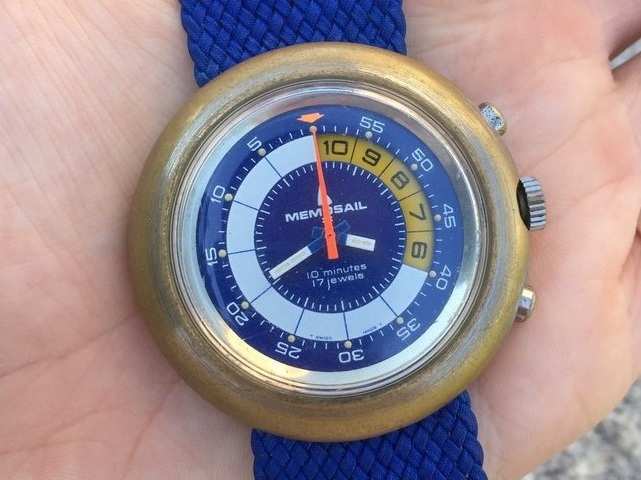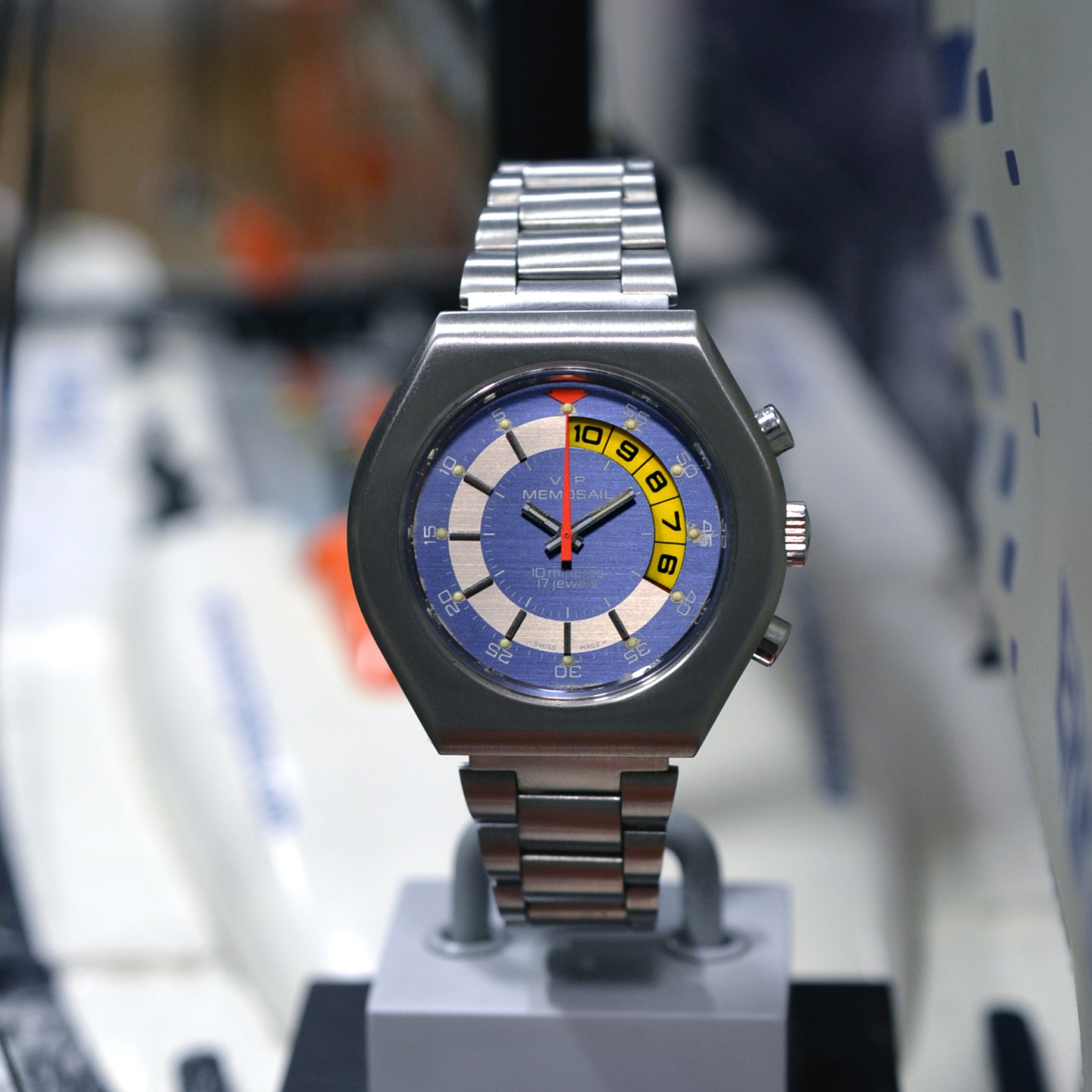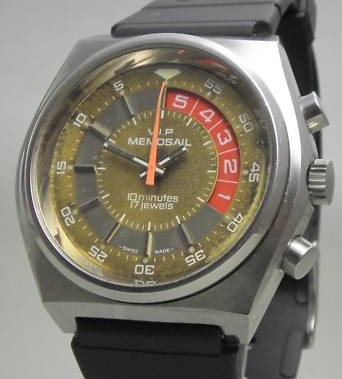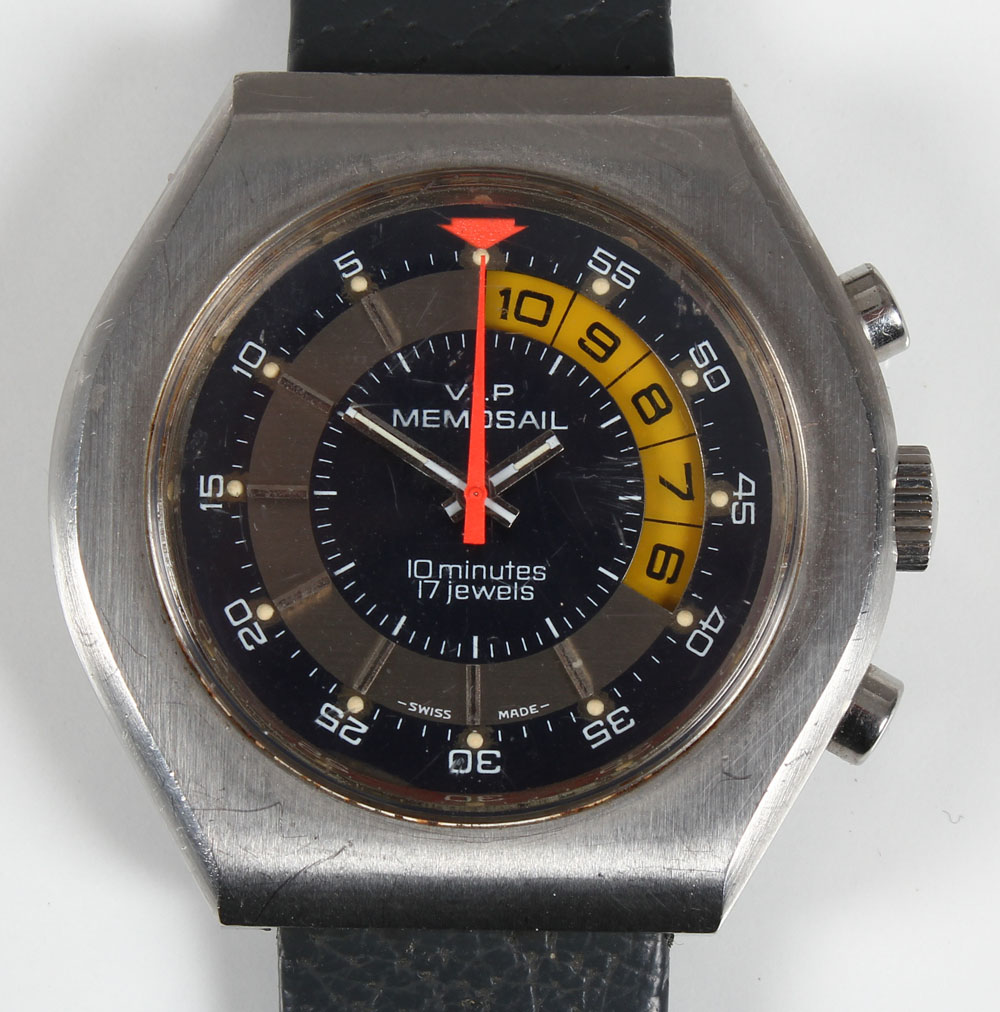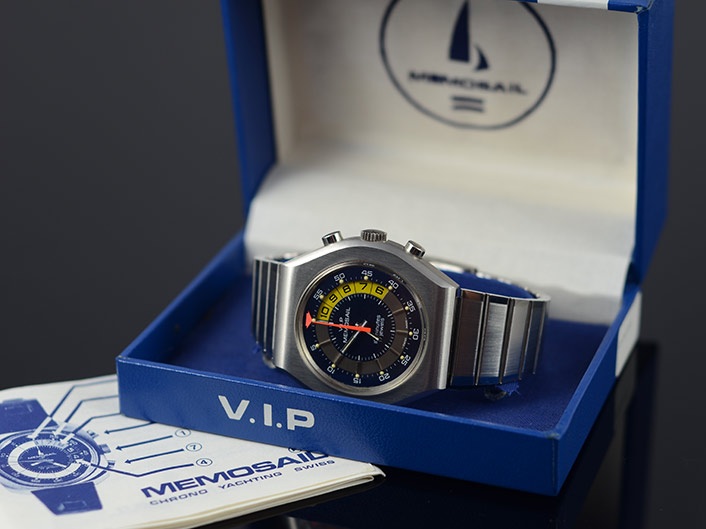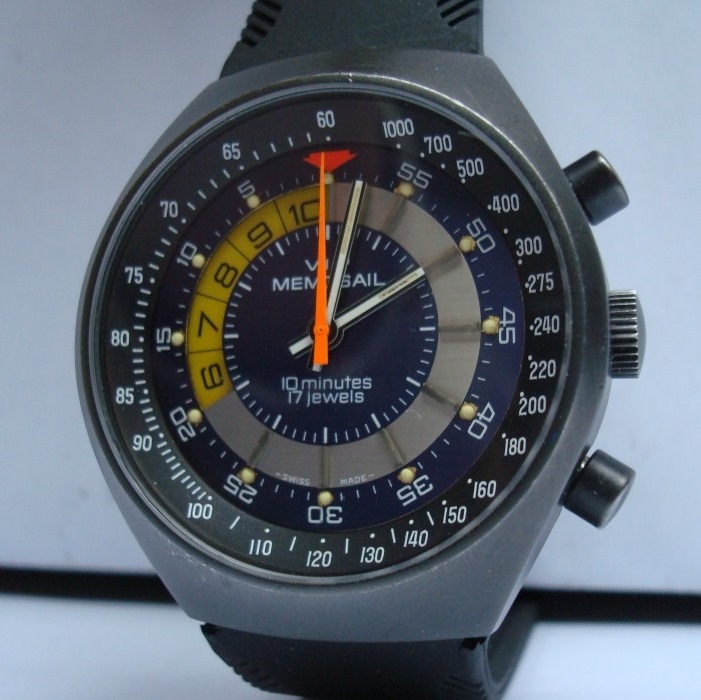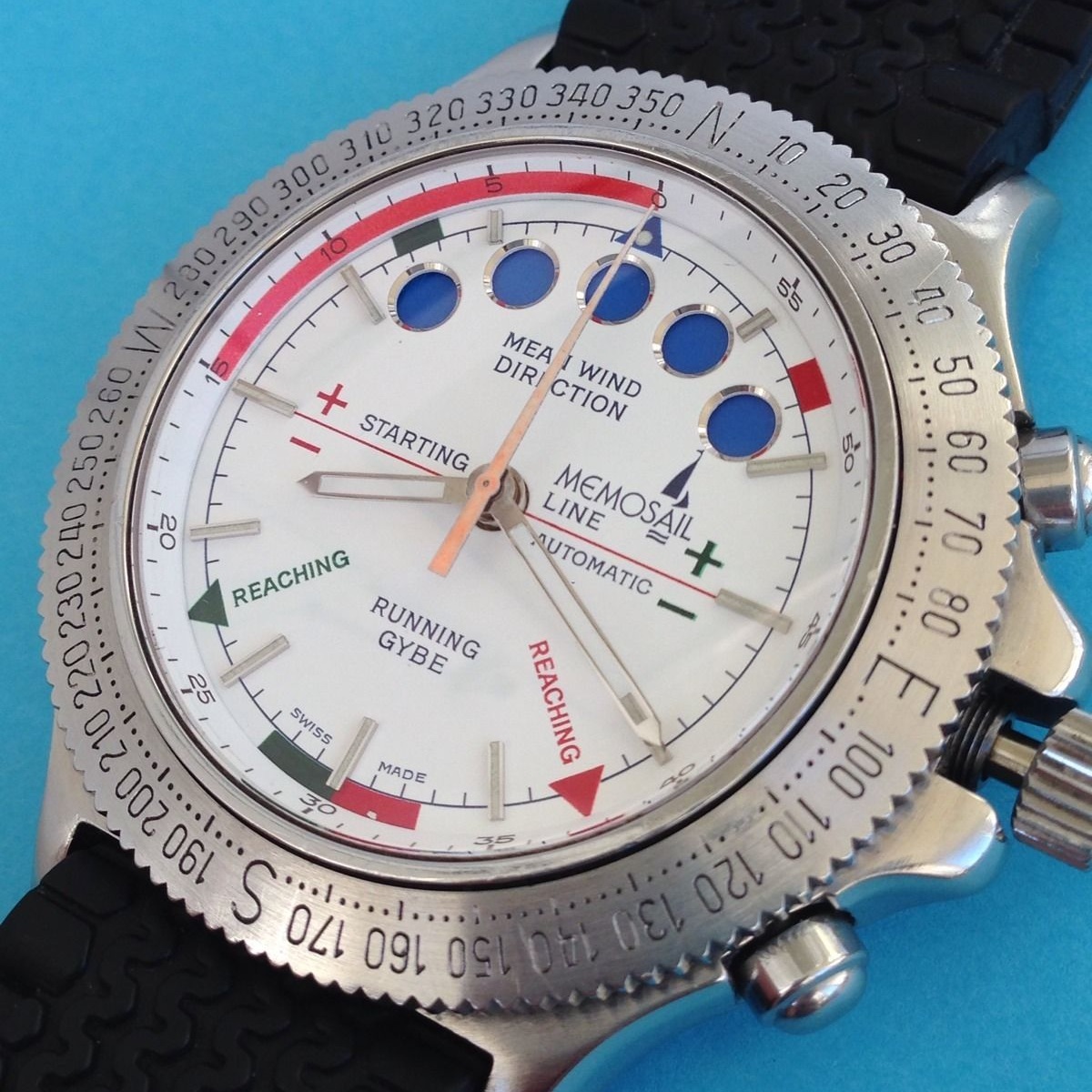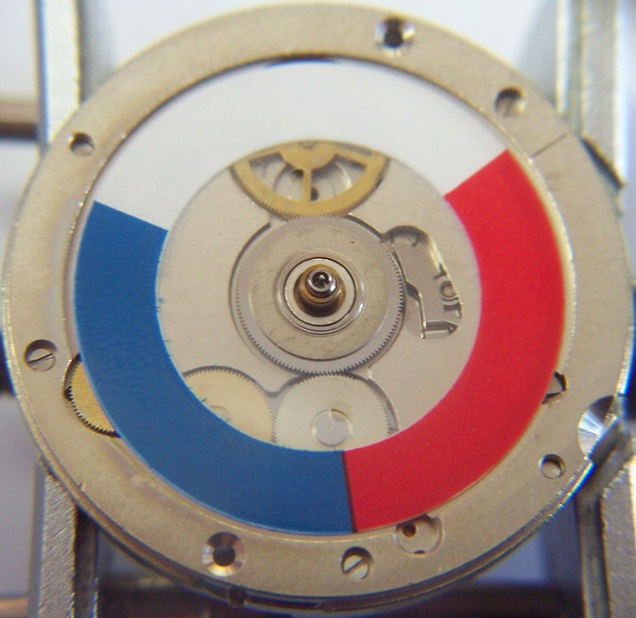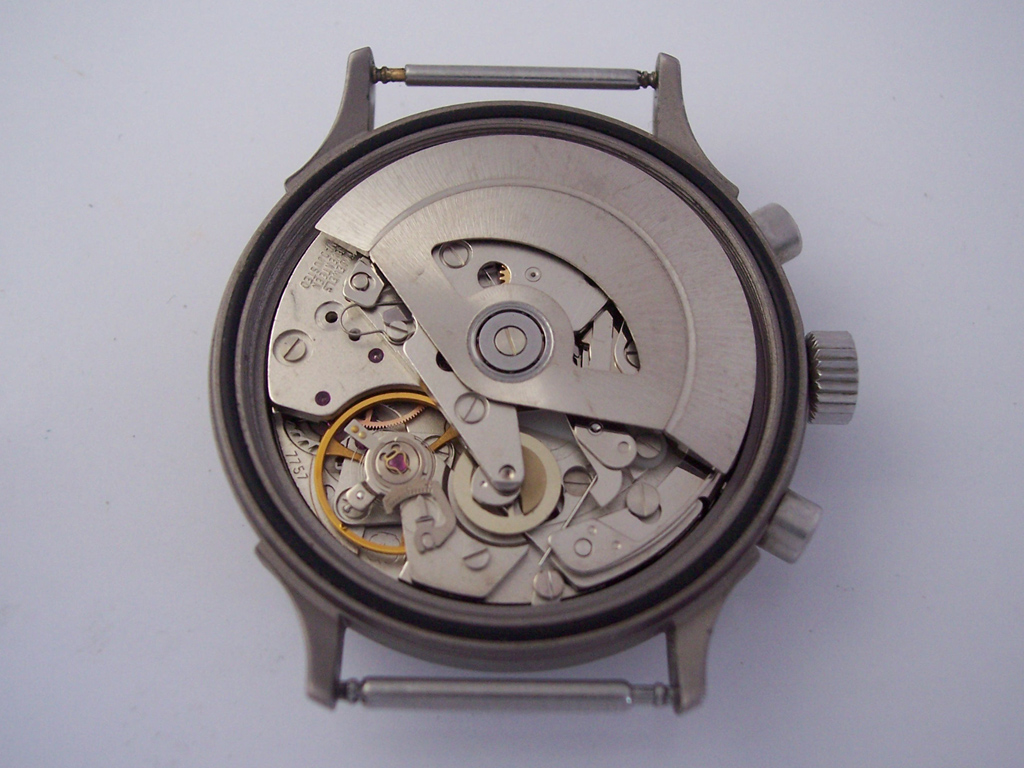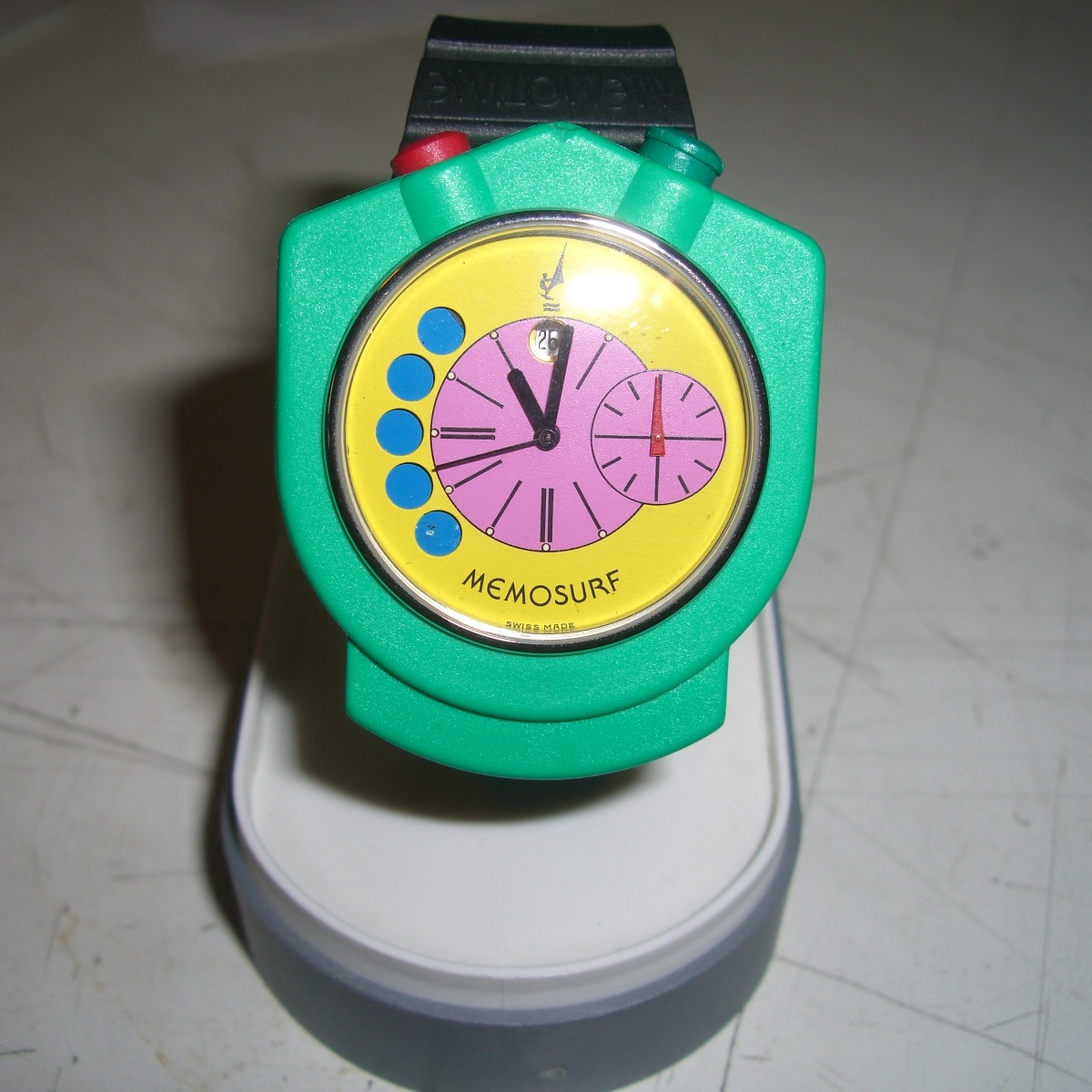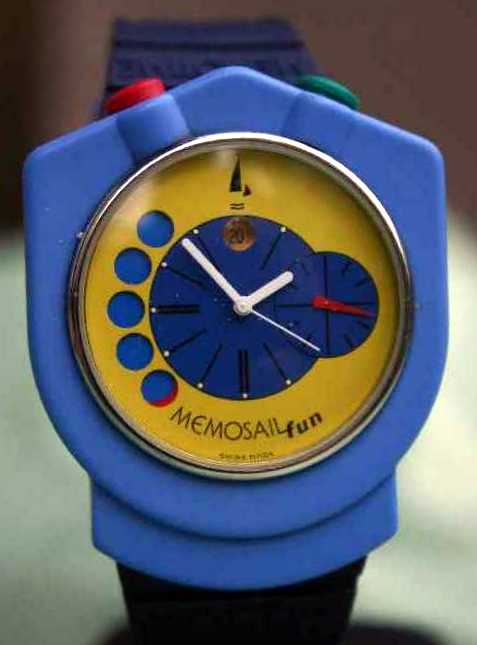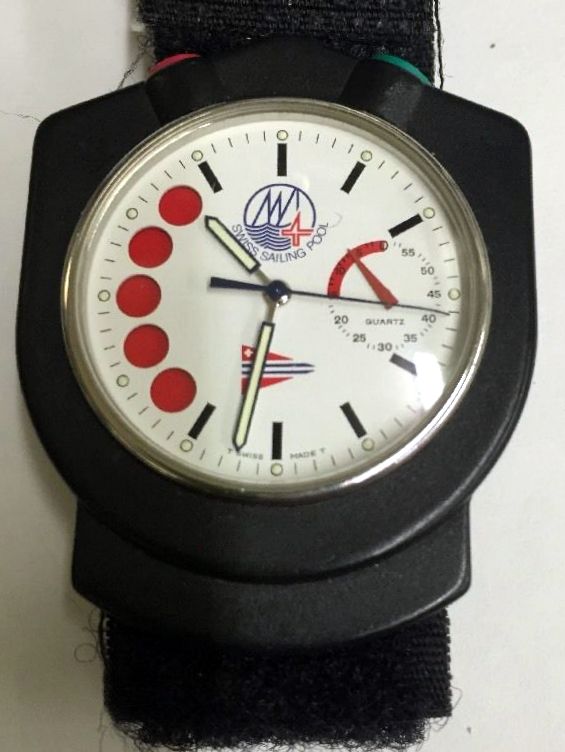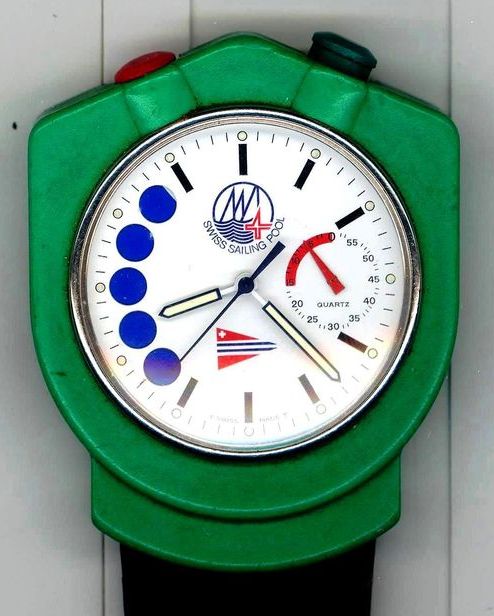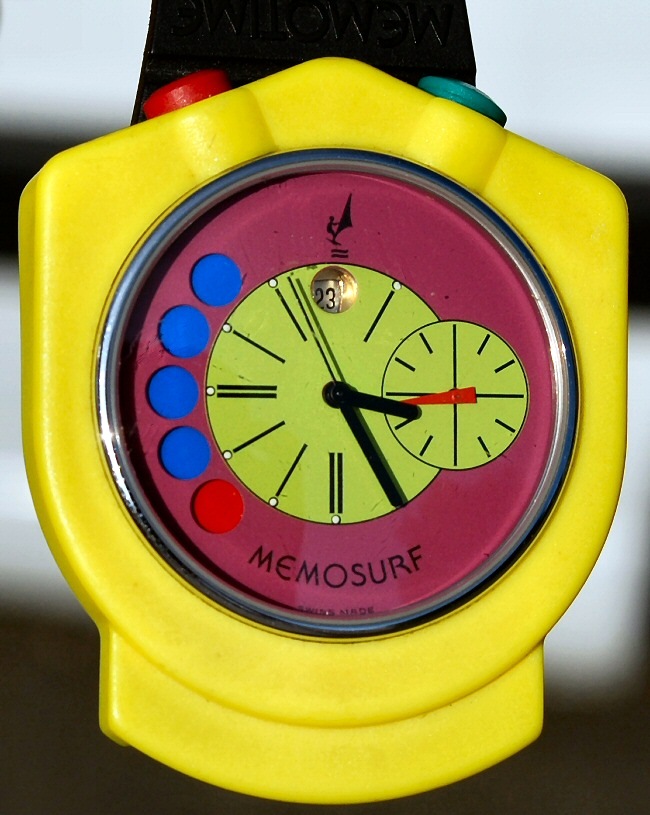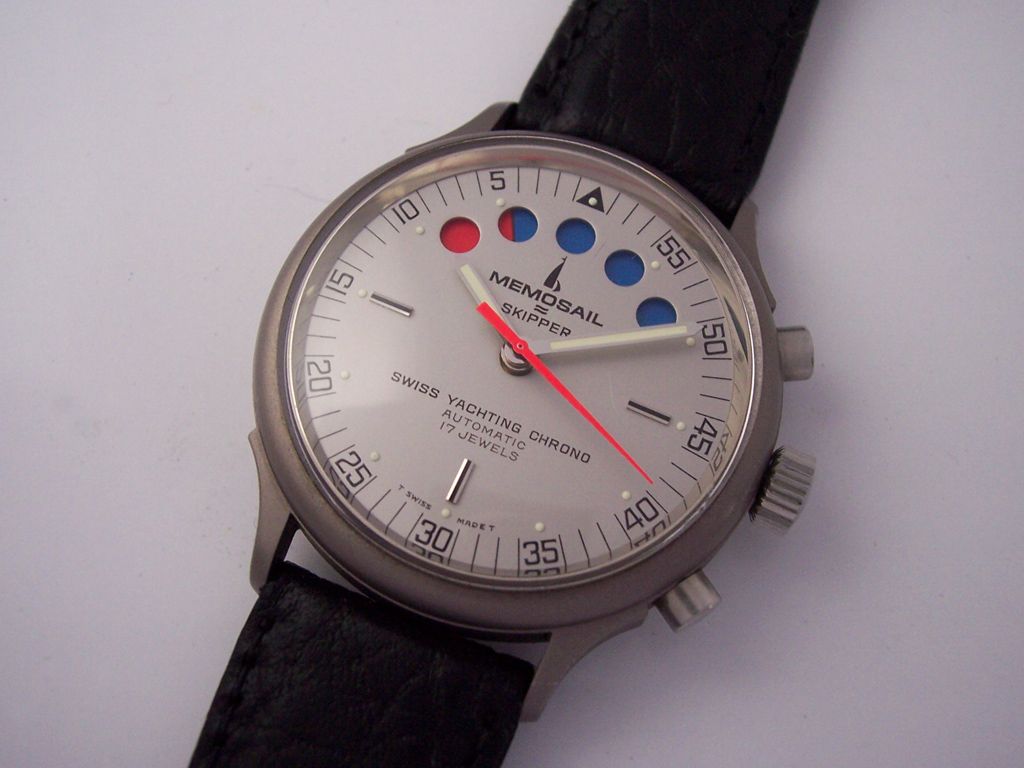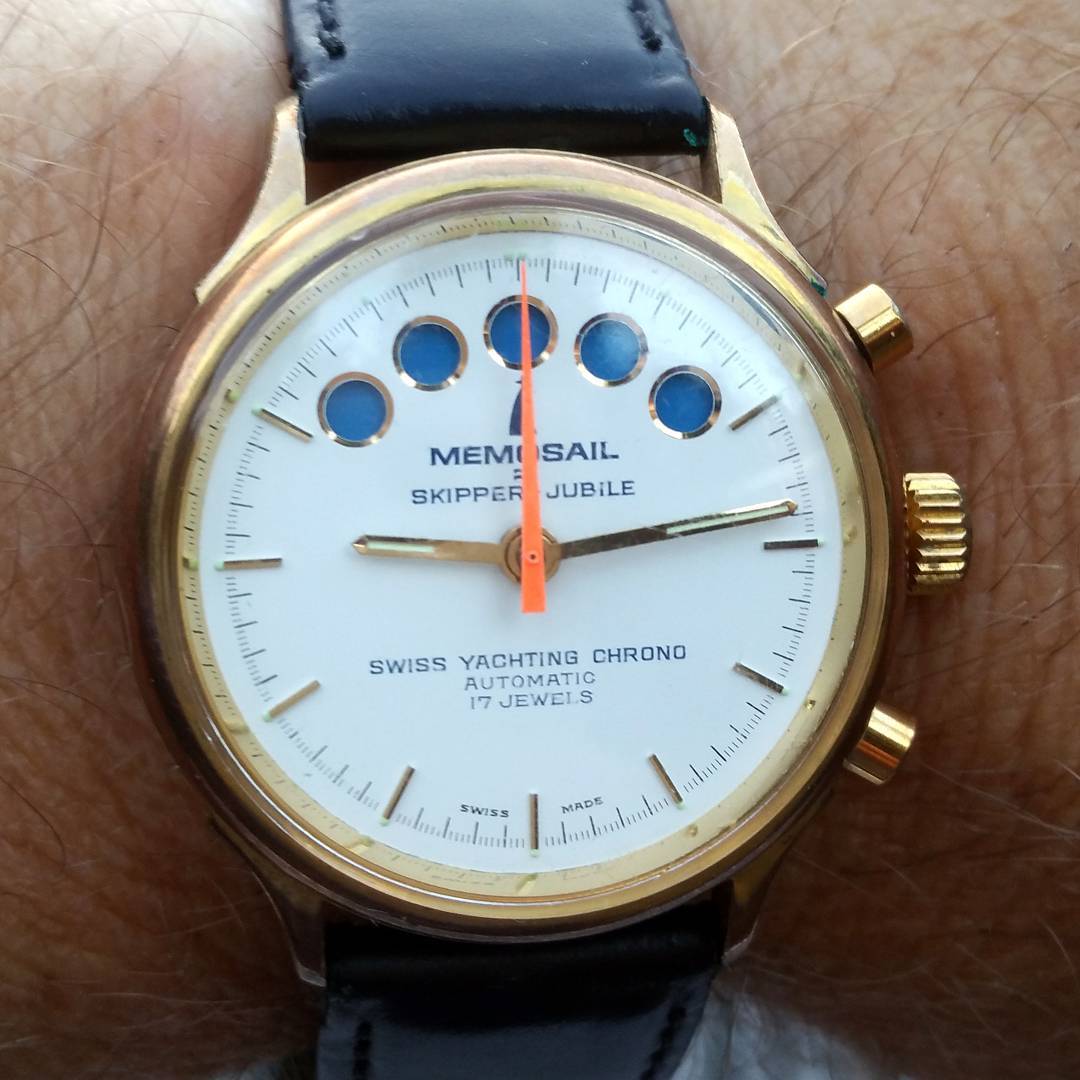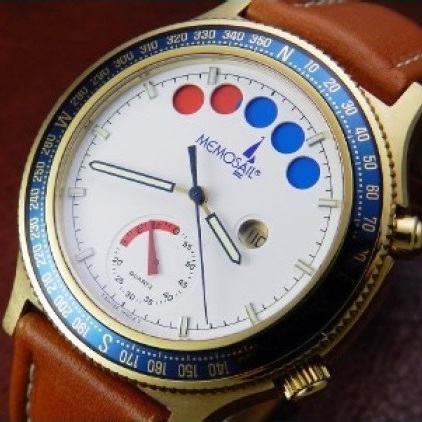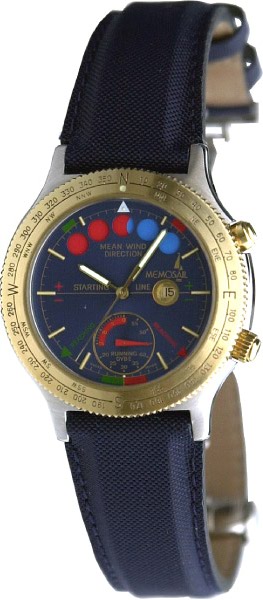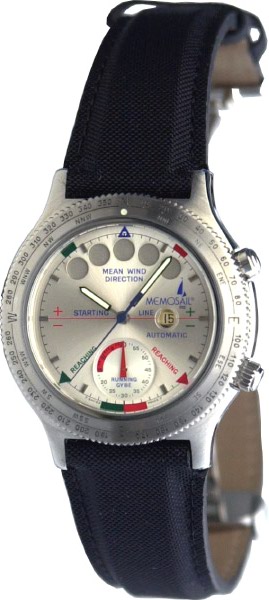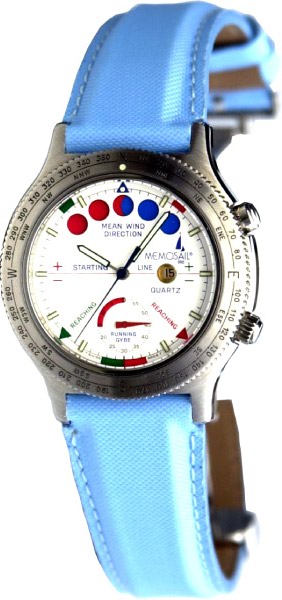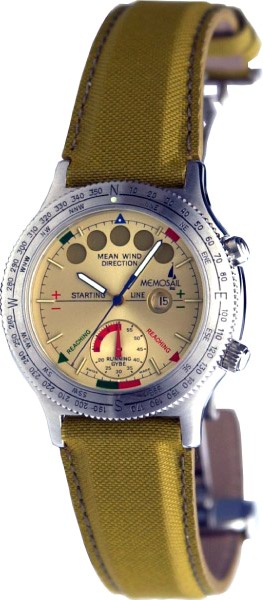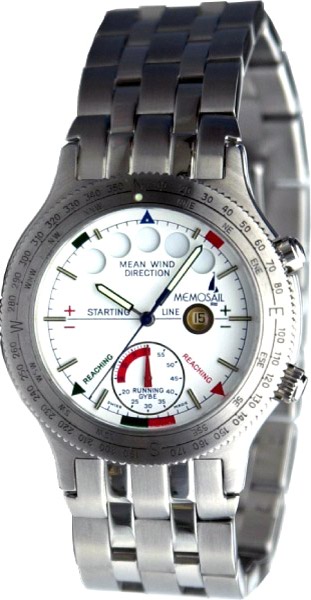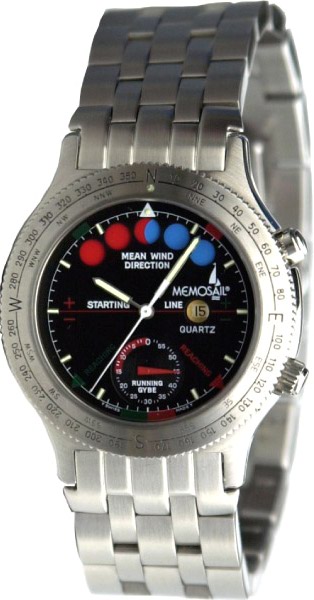The History of the Memosail Yacht Timer
The Memosail is a yacht timer watch from the 1970’s that is extremely unique - to say the least - in design and history. Its unique blue dial is what captured our founder and lead to his first vintage watch purchase. This post will be the history and incredible story behind the Memosail Yacht Timer.
The Memosail history stems from the history of the Ebauches SA company who, in August 9, 1972, filed to registered the name “Memosail” with the US Patent Office. Ebauches wanted to compete with other yacht timer chronographs like the Aquastar company with their 5-dotted timer with the Felsa regatta movement, the caliber 4000N. Below are images of both watches that Ebauche was competing with.
Source: The Watch Spot
Source: The Watch Spot
In order to create these watches, Ebauches created a new watch brand called Memotime in order to sell their new watch. Leveraging their vast ownership of multiple companies, Ebauches utilized one of their other companies, Valjoux SA, to develop a movement to rival other yacht timers. Earlier that same year (1972), patent CH566052 “Pièce d’horlogerie à mécanisme de chronographe” (loosely translated to ‘chronograph mechanism timepiece’) was filed in Switzerland for the movement that would be used in the Memosail. The movement would be known as the Valjoux 7733/4 which was a modified Valjoux 7737. The patent is written in french, and shows the way in which the movement interacts with the center disc and dial - the timing mechanism of the timer. The modifications that were done to the Valjoux 7737 was to have two teeth on the chronograph wheel. Normally, the chronograph movement would move the minute chronograph counter every time the chronograph hand passed 12 o’clock. By having two teeth on opposite ends of the wheel, the counter would move when the chronograph hand passed 6 o’clock and 12 o’clock. On the image below, item number 8064, the driver wheel for minute recorder, is the major modification of the chronograph movement. This moves the minute counter every time the chronograph wheel tooth passes 6 or 12 o’clock.
Source: Regatta Yachttimer
The minute - recording wheel is a 10 minute counter that counters backwards from ten. In regatta races, it is difficult for boats to line up on a “start line” because of the motion of the water and the danger of having boats so close together. In order to overcome this, boats are positioned in a starting area and a horn is blow or a radio signal is sent. Once this happens the racers have 10 minutes to get their yachts the start position before the race begins. The disc can be seen below - as you can see the gap in the display dial shows 5 pieces of the timing disc between 12 and 5 o’clock. Before the chronograph starts, it displays 10-6 in yellow. As it counts down, 5-1 appear in red and then the letters S-T-A-R-T will indicate when the race should start. The disc actually runs clock-wise unlike other chronograph movements. The disc will continue to rotate until the chronograph function is stopped by hitting the pusher at 2 o’clock, and reset by hitting the pusher at 4 o’clock.
Source: Crazy Watches
The watch itself has a distinct 1970’s design - the first few versions came in a 41mm round case with no lugs. The case was made of chrome plated brass, later made of stainless steel, which made the case very sturdy and resistant to sweat and possible sea water. Ironically, there is no water protection to the crown or chronograph pushers (neither are screw-down) which one could consider a serious design flaw. The brochure below shows the first design and advertisement of the Memosail and the image shows the box and papers that came with the watch.
Source: Regatta Yachttimer
Source: ClockSavant
The first few versions of the Memosail had 5th of a second indicators between each second on the outer ring of the watch. Later versions only had indicators for each second that passed by every minute. The inner section of the dial is where the hours and minute hands are located that will tell you the time. It is clear that the focus of the watch is on the timer aspect, which is understandable being that it is competing with other yacht timers. The fact it tells the time is an added bonus. Below are images of the round case design of the watch. These Memosails came on a blue rubber strap.
First version 5th of a second marks.
Source: Analog/Shift
Second version with second indicators, no millisecond indicator
Later, a cushion form case was released.
Source: PicBon
Other iterations of the Memosail were the V.I.P Memosail. The V.I.P Memosail were sold in a presentation box and are cushion form cases that measure about 44mm. There were many dial variations which give the watch a lot of variety in the collecting space. There is one version of the V.I.P Memosail that has a more elaborate dial variation. The counter on this version is also located from 8-12 o’clock and utilizes the Valjoux 7767. This movement was different to the Valjoux 7733/4 in that it revolved the counter disc clockwise. It also was a continuous rotation as opposed to moving every 30 seconds. This movement was probably a lot more pleasing to the eye being that the movement of the disc was much smoother.
Below is a complication of multiple images of the V.I.P Memosail. They came in two main types; one with a much rounder edged case and another with straighter edges and a distinct bezel around the crystal. The watches came on a stainless steel strap.
These watches were the only watches released by Memotime up until the 1980’s, where they adjusted the design of the watch case they were using. They released their first automatic watch called the Memosail Automatic. The design of the dial changed to having five dots that would track the elapsing of time. As the chronograph function runs, the dots go from red to blue to white. The race begins (if started correctly) when all the dots on the dial are white. The watch also includes a bezel that displays a compass and sail positions that can be tracked based on wind direction. The utility of the watch definitely increased with the update of the watch.
Source: Regatta Yachttimer
The new version of the Memosail runs on the Valjoux 7757 which was also used in the Atlantic Skipper, a watch that the Memosail was directly competing with. Similar to the previous version, under the dial is a disc that rotates as the chronograph function runs. The disc and movement can be seen below.
Source: Regatta Yachttimer
Source: The Watch Spot
Around the same era, quartz watches became extremely in demand because of the fact that the accuracy of quartz watches outdid that of the mechanical watch. It is for this reason many brands began producing quartz power watches - including the Memosail - in order to not go bankrupt.
Source: Bukowskis
Source: Bukowskis
As you can see from the advertisement below, the watch was sold on both a nylon strap and a steel bracelet for 240USD and 260USD respectively.
Source: Regatta Yachttimer
Source: Swisstime
In 1989, Memosail released special versions of their yacht timer - the Memosurf and the Memosail-fun. They were released at European Watch Clock and Jewellery Fair and ran on the Harley Quartz 775 movement with additional parts attached to the movement in order for the chronograph to rotate the count down disc below the dial. They came in multiple colours and had the chronographs on the top of the watch as opposed to the on the right side of the case.
Memotime had risen in the world of sailing with the success of their Memosail models. Their success led to them being the official sponsor of the Americas Cup sailing competition in 1992. The sailing vessel America³ (USA-23), skippered by Bill Koch successfully defended their title that year from the Moro Challenge racing syndicate. The vessel measures 24m long, with a beam of 5.4m.
Memosail also released the Memosail Skipper and Memosail Skipper Jubilee. These watches are extremely rare and as you can see from the poster below, the Skipper Jubilee was made in very limited quantities. The Skipper used the Valjoux 7757 to power its yacht timer which is the same movement found in the Memosail Automatic.
Source: Regatta Yachttimer
Source: Insta Finder
The above version of the Memosail was sold up until 2000 when Memotime was purchased by Corum and relaunched their Memosail watches. There was a gap where the Memosail line was evaluated. The new version of the watch used the same mechanical concept to structure their yacht timing function. The design of the watch case was also very similar and in 2003, the new collection of Memosail watches were released.
Two models were released. The first was called the Memosail Skipper which was manufactured between 2003 and 2015. The case measured 41mm which housed the Memotime 883 regatta module (quartz) attached to the ETA 2671 caliber or a quartz movement. There were two case variations - one in fully stainless steel and the other two toned. The dial came in various colours including silver, white, blue, champagne and black. The bezels were either stainless and blue or black laqued and were either a diver bezel or a “rose des vents” (Compass in french) bezel and the instructions to use the bezel came with the watch. They came on the following straps - stainless steel bracelet, a black leather strap, a dark blue strap, a light blue strap, a black strap and a mustard yellow strap. The different variations can be found below.
Images Source: Regatta Yachttimer
The Memosail Racing came in the same case size and utilized the same movement configuration as the Memosail Skipper. The difference is that it did not come with the diver bezel variation. It only came with the “rose des vents” bezel but had the same multitude of strap and bracelet variations. Below you can see the different models.
Although the modern versions of the Memosail use quartz movements, they still continue the tradition of the Memosail that began back in the 70’s.
From 2015, there has not been a new release of the Memosail watch. It is has become hard to find Memosail watches on the market, especially the models from the 1980’s and 1990’s. The Memosail references from the 1970’s can be found, but ones in great condition are obviously held by their owners. The Memosail has an extremely unique design and history which is exactly what makes the watch so special. If you have a chance to wear one on your wrist, think about the regattas it may have participated in - or better yet - talk to the owner and hear the beautiful stories the watch may have been on. It will make the watch that much more special.
Thank you to Regatta Yachttimer and Heuerchrono (main sources for this post).



